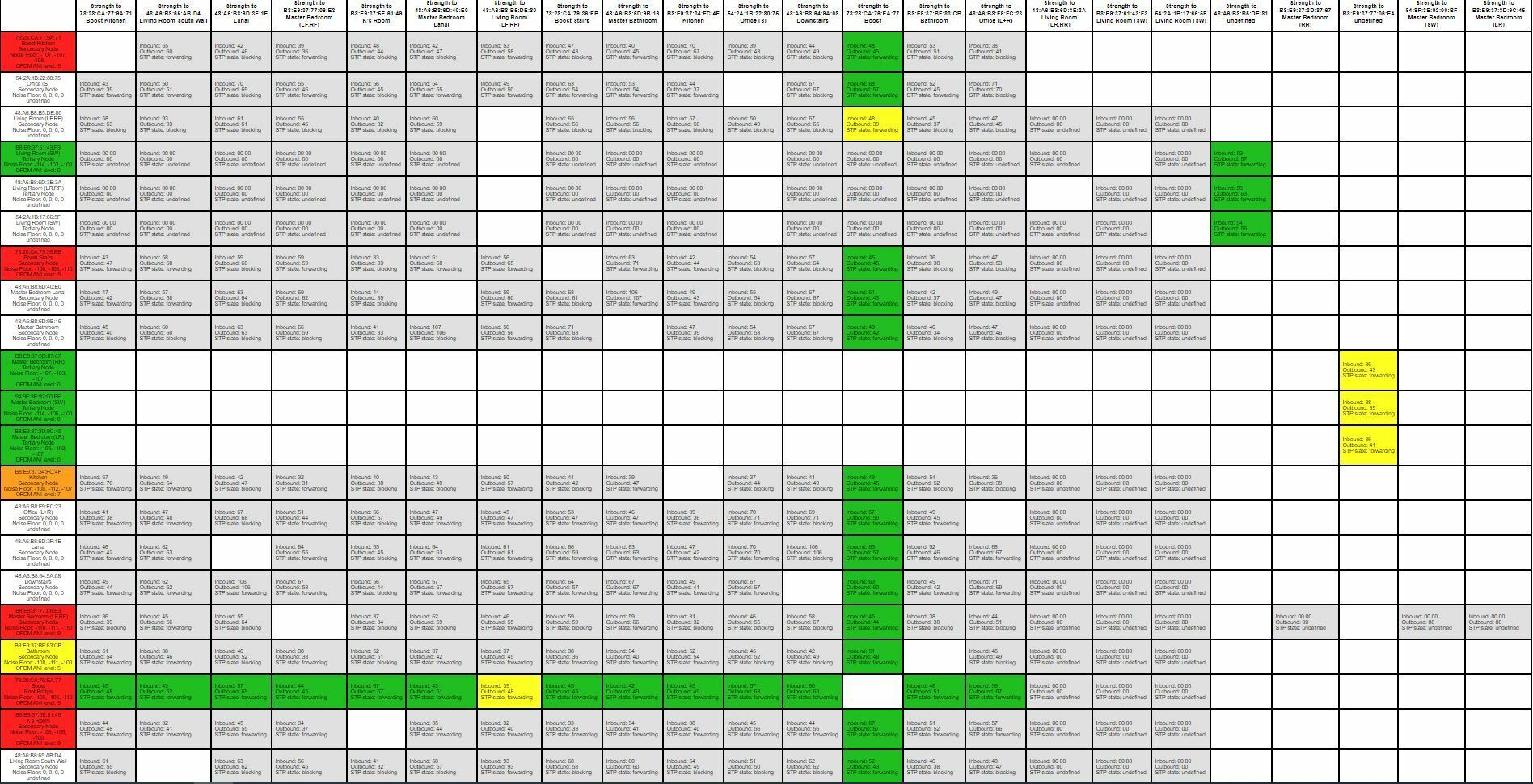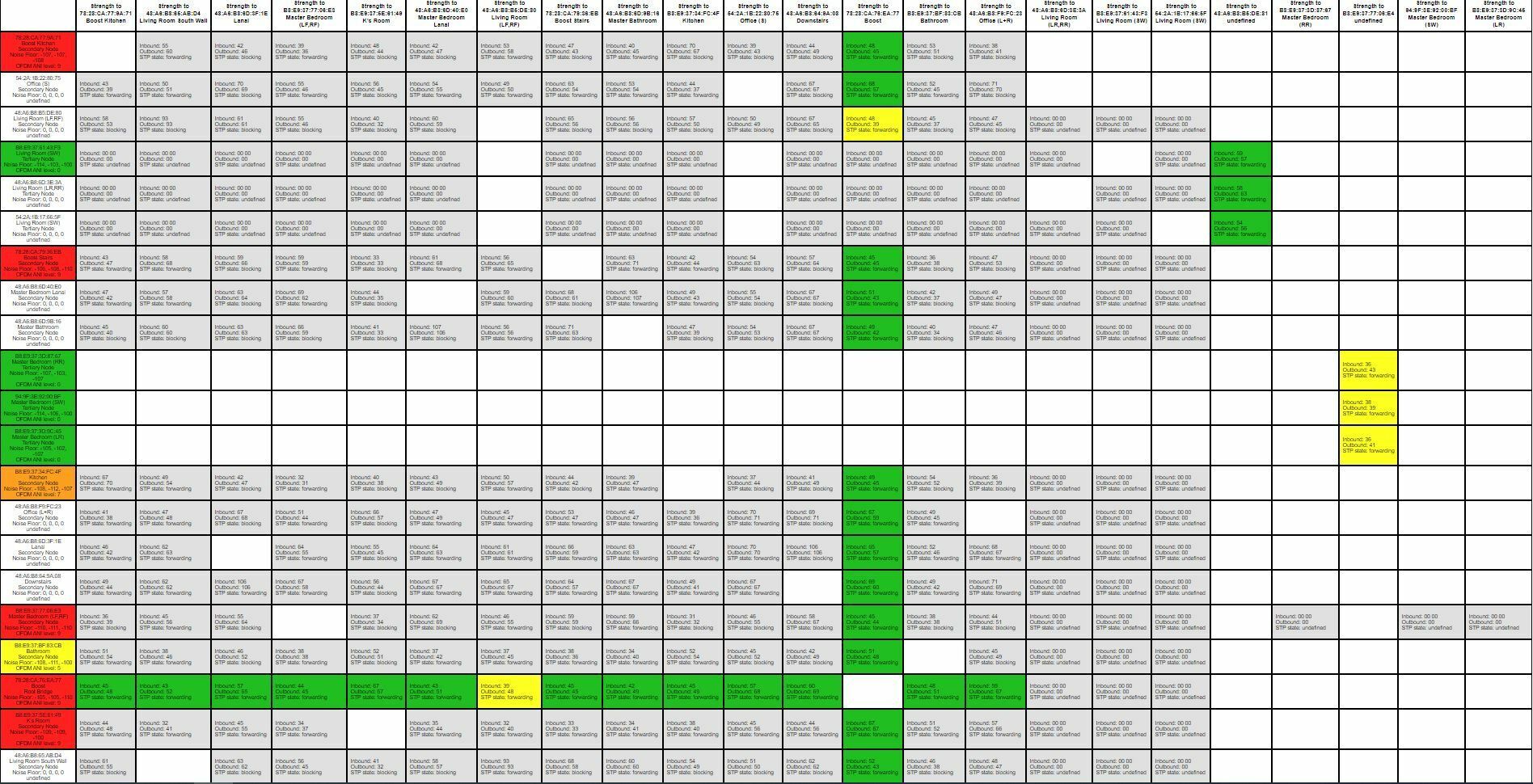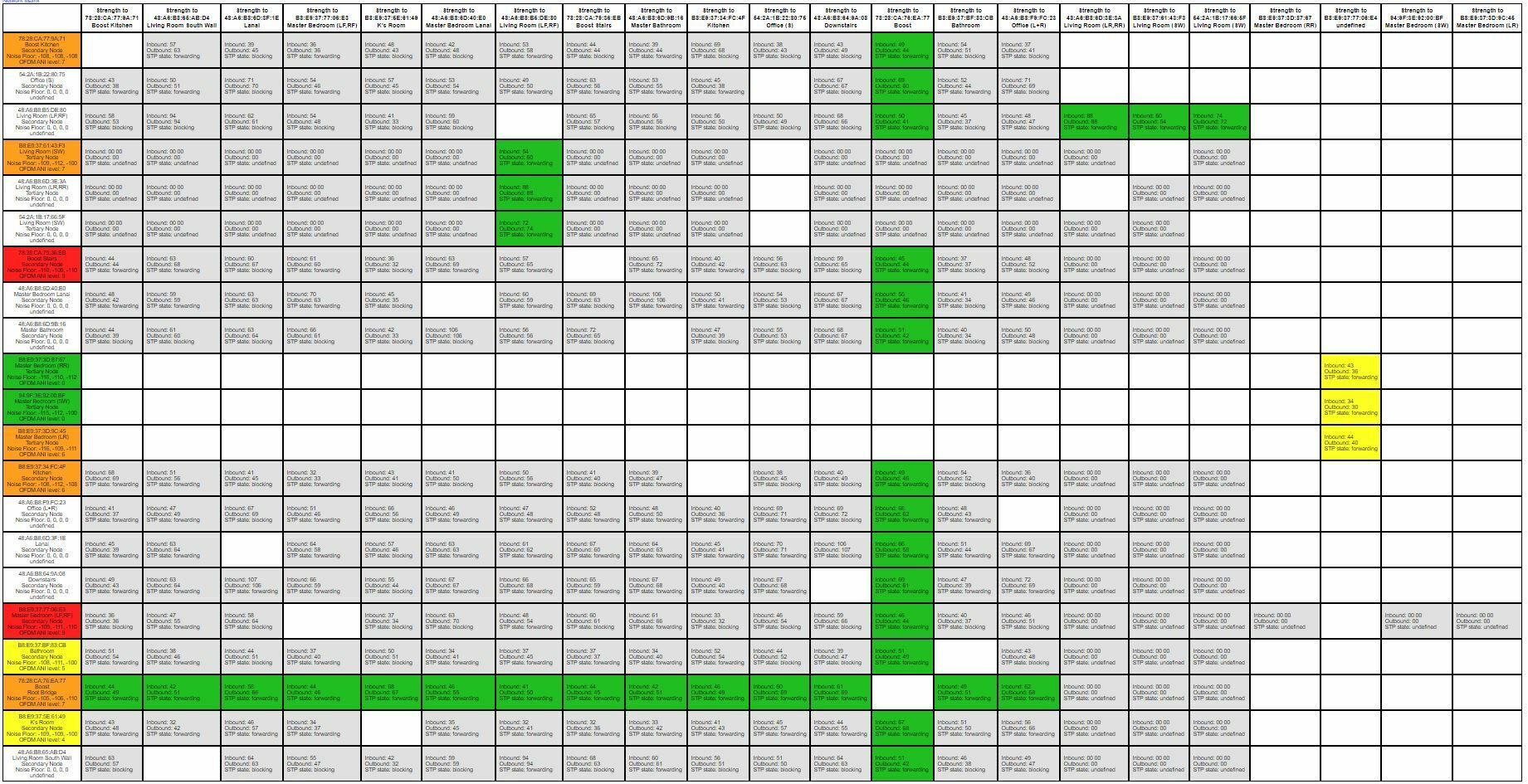Greetings all, I have recently moved to SonosNet via Boost which is running from my structured network panel. The Boost is hardwired but sitting close to the router and a few other hubs. Due to the cord lengths my ability to distance is limited. I have logged into my router and created static IP assignments for all of my Sonos products, so I should be good there. I have added two other boosts placed in what I think may be dead spots, but they’re showing up red too. I’m not a pro at this by any means, I’ve been reading the forums and doing what seems to make sense. My matrix throws up some red, but the only time I seem to have any drop out issues is when I try to play every device at once (“play everywhere”). Is the column left red the end of the world? Any advice on improvement? Thoughts on the health of my matrix from someone that knows what they’re talking about? Thanks in advance, looking forward to your thoughts / advice.




